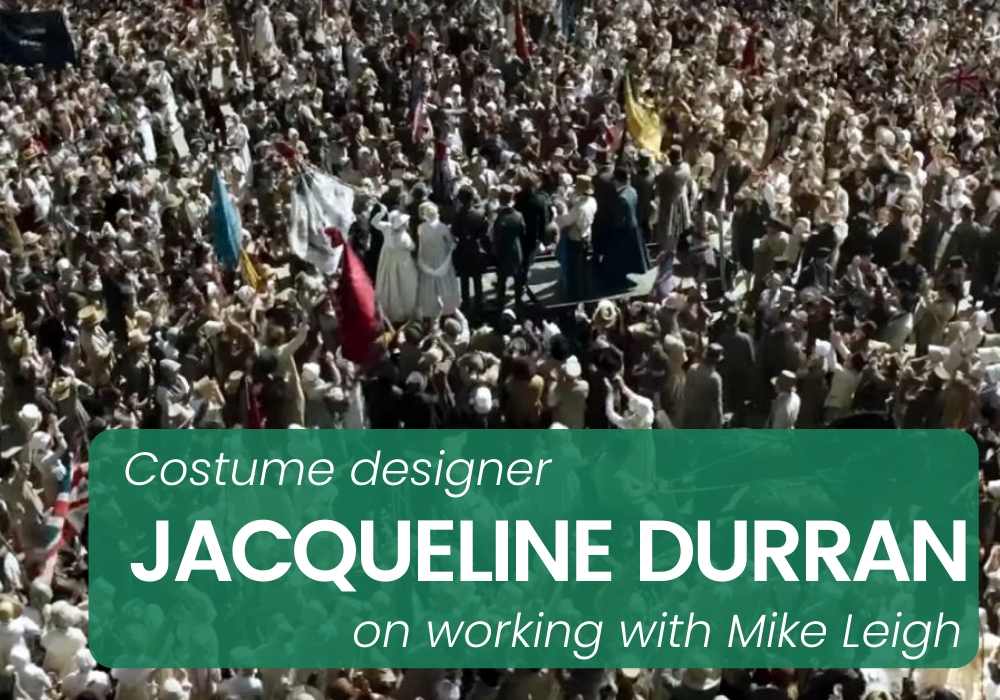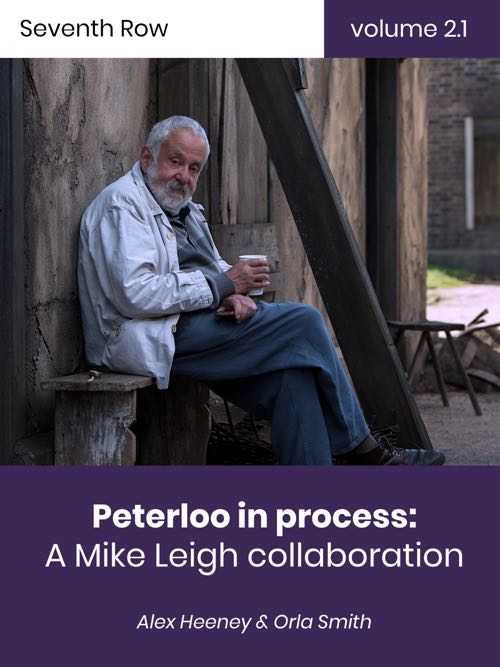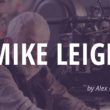Oscar winning costume designer Jacqueline Durran discusses her longstanding collaboration with Mike Leigh and her approach to designing period costumes for hundreds of characters in Peterloo. This is an excerpt from Peterloo in process, our ebook about Mike Leigh’s collaborative process.

Oscar-winning costume designer Jacqueline Durran (Anna Karenina) got her start working with Mike Leigh in the late ‘90s. After a stint as Assistant Costume Designer on Topsy-Turvy, she became Leigh’s go-to costume designer with All or Nothing (2001) — her first feature in the role. She has since collaborated with Leigh on all of his films, while also working regularly with Joe Wright (Pride & Prejudice, The Soloist, Darkest Hour). Though Durran is perhaps best known for her work on costume dramas, including Kurzel’s Macbeth (2015) and Atonement, she talked about how period costumes can never be totally “pure”, and the joy of doing modern dress films because of how accurate the costumes can be.
Seventh Row (7R): Mike Leigh has such a unique rehearsal process that goes on for months. I’m wondering how you fit into that process and when you start working with him and the actors to figure out their costumes.
Jacqueline Durran: The Peterloo method and the general method were quite different because so many of the Peterloo characters were historically existing. It was not as much about discovering the character as it was what evidence was there for what they might have worn, and then applying that to the actor. Or alternatively, working out with the actor, from their research, what the character might have worn.
When you do a modern Mike Leigh film, it’s entirely generated by the actor and Mike. You become involved in the process at the point when the actor knows their character’s past. Once they’ve reached the point in the rehearsal that’s the present, you are able to talk to them about what their costumes might be.
7R: And is that also the case for Mr. Turner? There were fewer characters in that.
Jacqueline Durran: So many less characters. The preparation was more in-depth. With Mr. Turner, let’s say, there were six or seven images of Turner at different stages of his life. We were extrapolating from those to develop what his costume would be. Tim (Spall) had lived with the Turner character for a long time. Even before the official rehearsal period, he’d been researching Turner, learning to paint. He had developed, over time, quite a strong impression of Turner and how he wanted to interpret him. We had these pictures, and we worked together to get the thing that felt right and looked right. The pictures were frameworks for that, and then he brought his interpretation to that.
With the Peterloo process, none of the actors had spent that long with the character. It was a different sort of project. At least half of the cast were playing historically existing characters, but for Rory Kinnear [who played Henry Hunt], we had a picture of his character on the hustings and other pictures from other moments. We know from historical research and costume history the sort of clothes that Hunt would wear. Then we made a stab at that based on our knowledge, on Rory’s interpretations, and the images we had of Hunt.
Lots of other people were historically existing, but we didn’t necessarily have a picture of them. I don’t think we had any images of Samuel Bamford so then we had to work with Neil (Bell). Actually, there was a written description of Samuel Bamford, but not an image, so we worked with the written description.
7R: I understand that Mike gives you very little information about what the actual scenes involve while you’re prepping your costumes. What challenges does that pose?
Jacqueline Durran: What was tricky on Peterloo was not knowing, for a long time, which people would be wounded. Even when we knew which people were wounded, we didn’t know where they were wounded, or how they were wounded, or any of those things that you know in a normal film. We didn’t know about stunt people too much. We didn’t have any storyboards. We didn’t have scripts. The logistics part of Peterloo, and being able to prepare what you wanted to prepare for the massacre, was very difficult.
We had to just make a guess at what we were going to do. We tripled the costumes of the people we knew were going to be injured, but we couldn’t afford to do more than three each because we didn’t know which ones were going to be prioritized. We covered the bases as much as we could given that it was a small film and there wasn’t that much time or money to prepare.
It was the logistics that were really tricky. And also just getting the amount of costumes. Nowhere existing were there 300 working class costumes of our period, so we had to make a lot of costumes. All the costume houses collaborated with us and made a batch of costumes to augment their own stock so we had enough to hire for the crowd. We had to get everyone to help up by making things for stock and then us hiring them from them.
7R: How do you approach designing costumes for that many characters?
Jacqueline Durran: In this instance, I didn’t approach it in a way that I have ever done before. The sheer number of costumes and the lack of information at the beginning — about who was going to be what and where we were going to see them and how the film was going to be — I just had to be sure that we had a large stock of appropriate costumes. Then I had to fit the principal actors out of the stock we had made.
There’s stock costumes for the magistrates and anyone that was not one of the working class characters; we could hire their clothes more easily because all that stock exists because that’s the normal subject of film. We tried to make them as distinct from each other as possible, to give each one a character and an interpretation.
For the working class characters, we fitted them, and we tried to see what character they were and if there were historical things we needed to take into account. We would fit them from the stock that we’d accumulated.


